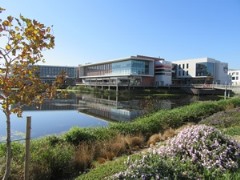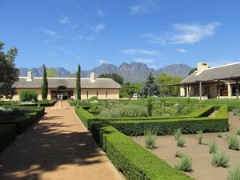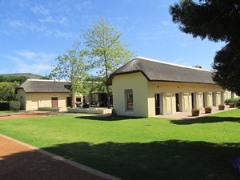1. VREDE EN LUST
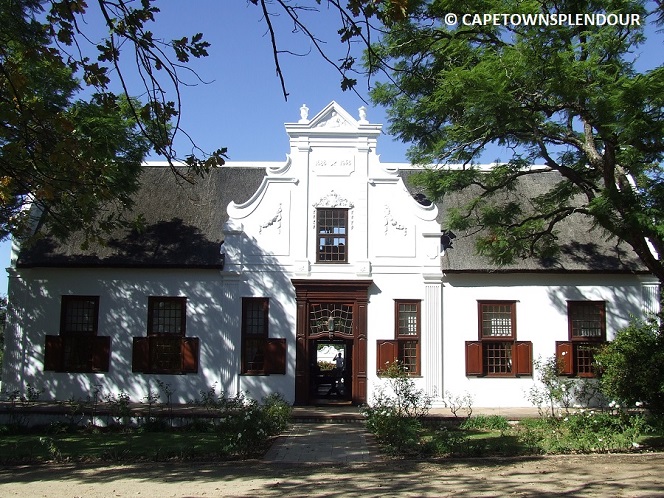
This ornate neoclassical gable is one of the most detailed of the era. The wooden architrave around the door is similar in concept to that of Groot Constantia but without the pediment triangles.
See TOP-ARCHITECTS for more examples of residential architecture in the area.
2. WEBERSBUG
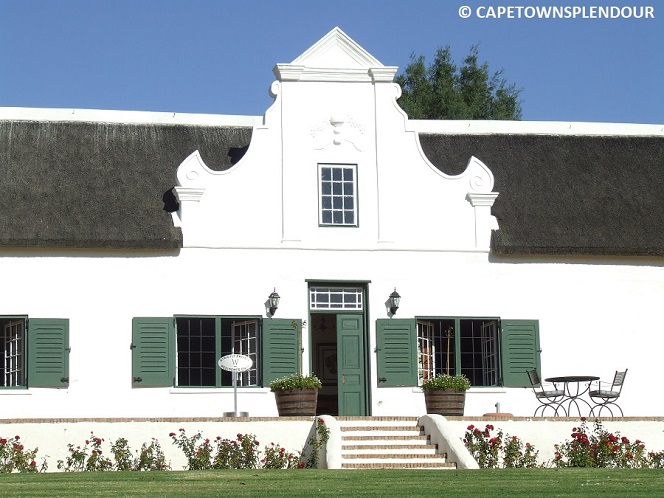
The generous sweeping curves of the baroque style gable are offset by the simple concave-convex shape of the side gables. The h-shape nature of the house is clearly visible as one approaches the house across an open field in the farm.
See also ArchitectCapeTown for more examples of house design in this style.
veloper.
3. SPIER
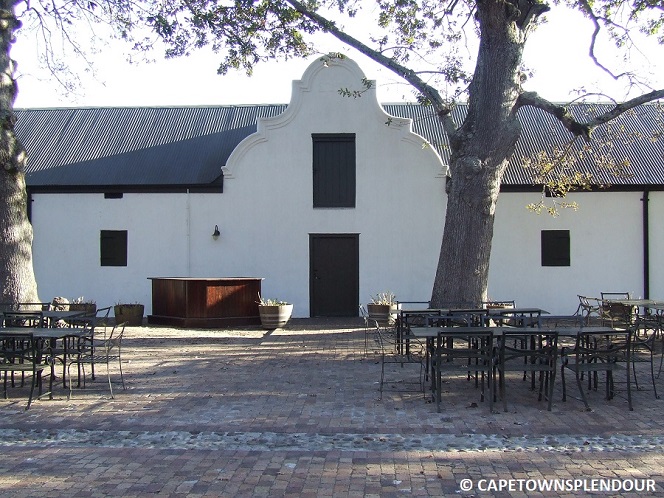
The outbuilding at spier is very simple with its concave-convex gable and minium of apertures. The thatch roof has been replaced with metal which is preferable to tiles.
See TOP-ARCHITECTS for more examples of residential architecture in the area.
See
MORE ON SOMERSET WEST ARCHITECTS
at this page for designers working on farms in the Helderberg Basin and different styles that may be possible on these stunning erven.4. BUITENVERWACHTING

The house at buitenverwachting lies almost next to Groot Constantia, and yet it is much less well known. The gable is unusual in its suqareness but made very delicate by a pair of urns. The windows are doors are laid out in the most typical arrangement for Cape Dutch houses.
5. MORGENSTER

The gable window is horizontal in its proportions, while the fanlight above the front door is exactly square. The gable is considered the most typical example of the baroque era in style. The pergolas stop in front of the gable section which keeps it open.
See TOP-ARCHITECTS for more examples of residential architecture in the area.
Internal Link: See
MORE HOMES BY LUXURY RESIDENTIAL ARCHITECT
for designs by top architects working in the area.6. LIEVLAND
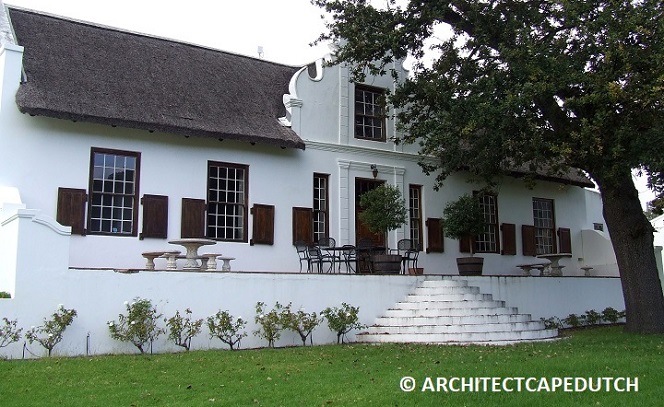
This is unfortunately one of those examples where the tree blocks the front facade of the house. Careful trimming might allow the gable to be seen.
See also ARCHITECTCAPETOWN for more information on Cape Vernacular architecture.
7. LA MOTTE
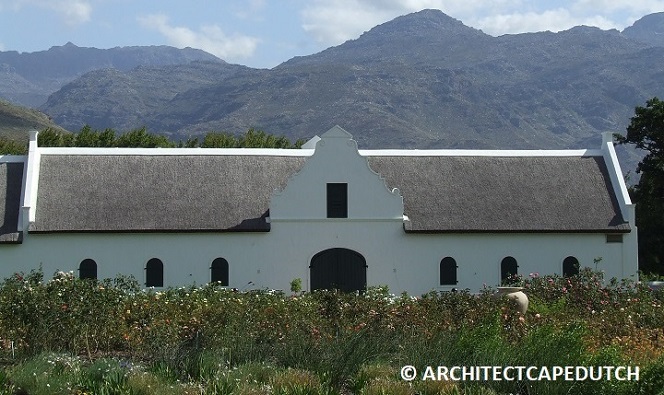
This cellar building has a beautiful layout of one central arched door, with three small arched windows either side on the wings of the barn structure. It rests beautifully between the vineyards and the mountains.
SA ARCHITECTURE STYLES:
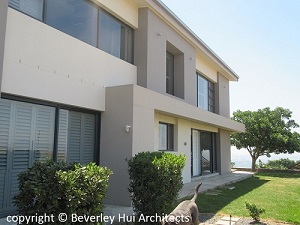
MODERNISM
Some consider it the only vallid style in the 2020s, there has been a huge up-tick in interest in this style in Cape Town over the past two decades.
See also ARCHITECTCAPETOWN for more on South African architects fees.
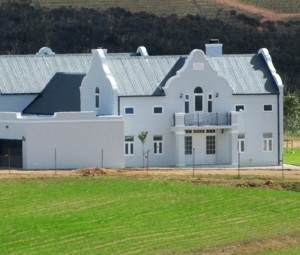
CAPE DUTCH
A longing for rootedness to the lands and permanence in our technology dominated world has lead to a rise in interest in traditional styles, the Cape Dutch style being particulary endemic to South Africa.
See also ARCHITECTCAPETOWN for more information on Cape Vernacular architecture.
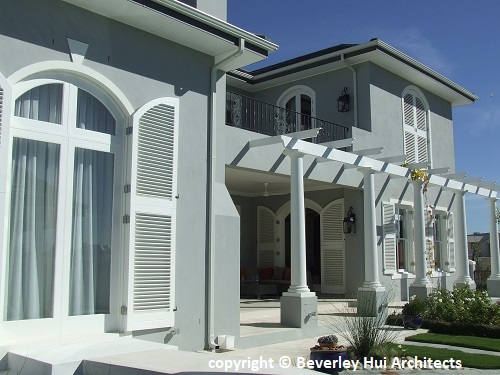
MODERN FRENCH
Traditional styles that have been updated with modern materials and sensibilities provide some of the most interesting styles of our day.

MODERN CAPE DUTCH
By straightening the gables of traditional Cape Dutch buildigns, the Modern Cape Dutch style arose. No-one knows who designed these first, but Denis Moss architects was one of the originals to embrace the style.
See also ARCHITECTCAPETOWN for more information on Cape Vernacular architecture.
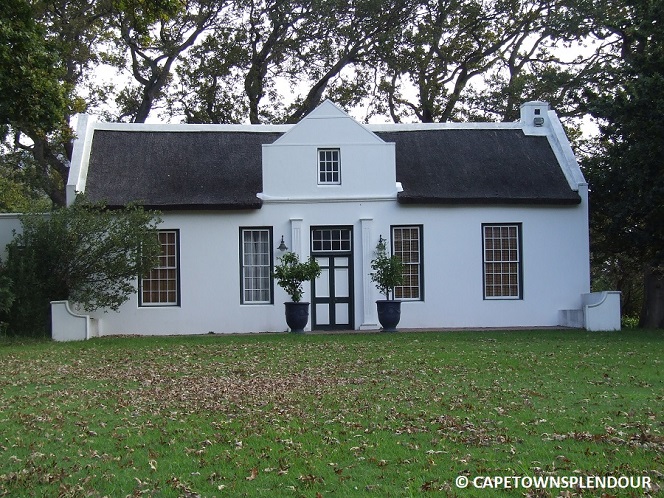
8. LA BRI
This compact little home has two windows either side of the main door, without the narrow little windows one ofen finds on the central gabled portion of the house The green door with white infill panels gives the house a cottage charm, while the very straight gable is a predecessor to the modern Cape Dutch style. GLITZYMAGAZINE for other articles on this interesting South African architecture style.
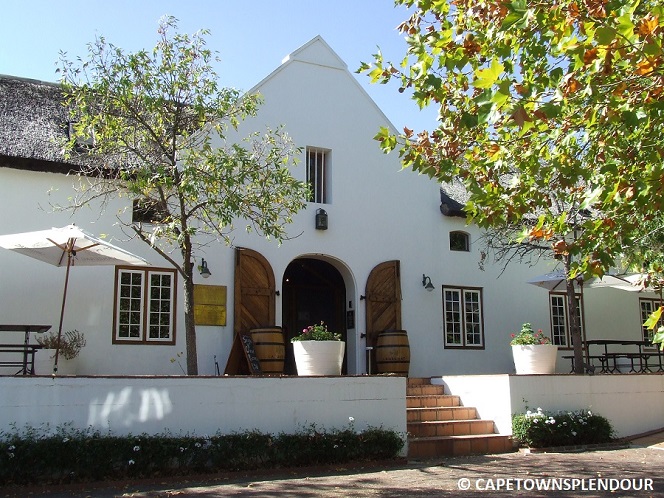
9. KANONKOP
The very small gable window and the rounded door with timber shutters is distinctive. The cellar type windows on the loft are a concept that has been used by modern cape dutch style design architects. Visit ARCHITECTCAPETOWN for more on the modern Cape Duth style.

10. GRANDE PROVENCE
This sturdy house with a typical neoclassical gable lies hidden in a forest of maple trees in the heart of the Franschhoek Valley. Many of the French settlers made their homes here centuries ago and made their creative talent felt for future generations. Visit GLITZYMAGAZINE for other articles on Cape Dutch gardens.
CLICK NEXT BUTTON TO SEE MORE
____________________________________NEXT >



